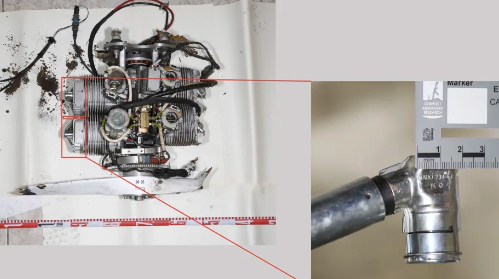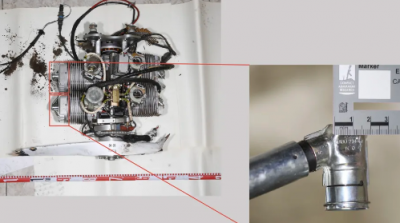A recent study revealed Iran's reliance on Western technology to build a strong arms industry and how Russia uses this technology against Ukrainian cities. According to a study published today, Friday, in CNN by American software engineer Tim Lister, the Shahed-136 drones sold by Iran to Russia operate with an engine based on German technology—an unauthorized technology that Iran obtained nearly 20 years ago.
The Conflict Armament Research organization, a UK-based entity that investigates weapon components, confirmed that findings from a detailed examination of components discovered in Ukraine, shared exclusively with CNN, demonstrated Iran's ability to accurately replicate military technology acquired illicitly. Lister pointed out that Western officials are concerned about the potential for Russia to share Western-made weapons and equipment on the Ukrainian battlefield with the Iranians. So far, there is no conclusive evidence of this, adding: "The relationship between Tehran and Moscow has significantly strengthened. Russia wants Iranian drones and ballistic missiles, and Iran wants Russian investment and trade." According to Iranian officials, Russia became the largest foreign investor in Iran last year. For the Russians, Iranian drones provide a cheaper alternative to much more expensive missile deals, which are dwindling in stock according to Western officials. Experts believe that a Shahed-136 drone, for example, costs around $20,000, a fraction of the price of a Kalibr cruise missile.
The American software engineer noted that last October, Kirilo Budanov, the head of Ukrainian military intelligence, indicated that Russia requested around 1,700 Iranian drones of various types. Ukraine has demonstrated proficiency in destroying Shahed-136 drones, yet this strains its already limited air defenses. Despite their relatively small explosive payload of up to 40 kilograms (88 pounds), the precise strikes from Shahed-136 drones still cause significant damage.
**German-Supported Technology**
The software engineer revealed that between November of last year and March 2023, the Conflict Armament Research organization was able to examine the components of 20 Iranian-made drones and munitions in Ukraine, nearly half of which were of the Shahed-136 model. They confirmed that the engine for the Shahed-136 drones was reverse-engineered by an Iranian company known as MADO, based in Qom province. The company was sanctioned by the UK, US, and EU in December of last year. Researchers found MADO's marks on the spark plug covers of the drone's engines, along with the serial numbers used by MADO.
**What Role does "MADO" Play?**
MADO has played a critical role in Iran's drone production, according to Western governments and the United Nations. UN investigators noted the presence of the same serial number pattern on drones that attacked Saudi Arabia, which the Houthis, Iran's allies in Yemen, allegedly executed, as well as the missile attacks last year against the Emirati capital, Abu Dhabi. Timur Khan, a Gulf analyst at the research organization, stated to CNN that Iranian drone systems have been continuously refined and updated, "proving increasingly accurate concerning targeting and guidance systems as well as counter-jamming capabilities."
The design of the MADO engine reveals an intensive Iranian effort that spans around 20 years to obtain Western technology for its drones and missiles in the face of widespread international sanctions. Lister continued: "In 2006, Iran illegally acquired drone engines from a German company. Three years later, an Iranian engineer named Youssef Abu Talebi announced that his company had manufactured a drone engine. The company appeared to have tried to conceal its role in building the Shahed drones, according to the Conflict Armament Research organization. Investigators found that the original serial numbers of drone components present in Ukraine had been erased, in a clear attempt to obscure their origin.
Among other Western components that Iran has acquired and copied are parts from Czech-made missiles. The software engineer referenced a report to UN experts in 2020 stating that the engine in the Iranian Quds-1 missiles used in attacks on Saudi oil refineries the previous year "was" an unauthorized copy of the TJ-100 jet engine manufactured by a company in the Czech Republic. Experts noted, "The Czech engine seems to have been installed on the Iranian Haidar-2 missile." He added: "The company stated that it had never supplied Iran or Yemen with the engine, but Iran has become adept at evading controls on sensitive technology, sometimes using front companies." A UN committee found that parts the Czech manufacturer exported to a company in Hong Kong in 2010 ended up in Iranian missiles used in 2019.
**Deepening Partnership**
Lister concluded: "The Russian military is likely to remain an eager customer for hundreds of drones from Iran, a nation that has made evading sanctions to build a domestic arms industry a fine art."




